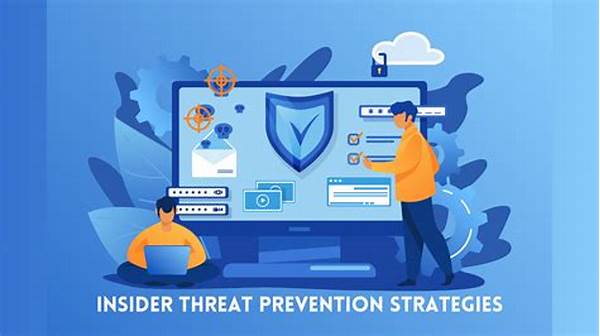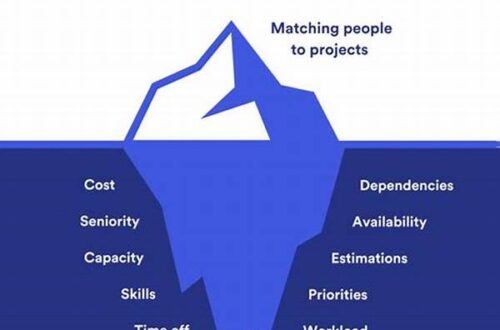In today’s interconnected digital landscape, organizations face numerous security challenges, among which insider threats persist as a particularly insidious risk. These threats can originate from employees, contractors, or business partners, and manifest through malicious actions, negligence, or unintentional data leaks. To mitigate these risks, comprehensive insider threat prevention strategies are paramount. Such strategies are not only about deploying technical defenses but also encompass robust policy frameworks, continual education, and fostering a security-centric culture within an organization. This article explores various dimensions of insider threat prevention strategies, detailing approaches that organizations can adopt to safeguard their sensitive assets.
Understanding Insider Threats
Insider threat prevention strategies are integral to an organization’s security architecture. These strategies revolve around identifying potential risk factors that may predispose insiders to compromise confidential information. Through a combination of behavioral analytics and risk-based access controls, organizations can design systems that detect anomalies and trigger intelligent alerts. By doing this, organizations create a real-time defense mechanism that not only identifies but also preemptively mitigates insider threats. Protecting sensitive data thus becomes a continuous process of monitoring, evaluating, and enhancing measures to shield against potential breaches.
Moreover, understanding insider threats involves an appreciation of the diverse personas that could potentially pose threats. These range from disgruntled employees to unaware personnel whose actions are unintentional. Insider threat prevention strategies should, therefore, encompass awareness programs tailored to address all facets of the workforce. Encouraging employees to engage with security protocols and educating them on the implications of insider threats contributes significantly to precluding such risks. This holistic preparation is integral to reducing vulnerabilities and reinforcing the security posture against internal threats.
Key Components of Prevention
1. Comprehensive Risk Assessment: Conducting regular evaluations enables organizations to identify vulnerabilities. Insider threat prevention strategies should include assessments that factor in both human and technical elements, streamlining processes to address potential insider threats effectively.
2. Enhanced Access Control: Restricting access to sensitive information is vital. Implementing role-based access controls as part of insider threat prevention strategies can minimize the likelihood of unauthorized data access.
3. Continuous Monitoring: Implementing systems that allow for real-time monitoring of activities serves as a cornerstone. Through insider threat prevention strategies, organizations can promptly identify and respond to suspicious behavior.
4. Employee Education Programs: Comprehensive training constitutes a proactive component of insider threat prevention strategies, cultivating an informed workforce that is aware of the risks and responsibilities associated with safeguarding sensitive information.
5. Incident Response Planning: Preparing detailed response plans is essential to minimizing damage in the event of a breach. These insider threat prevention strategies should delineate methods to contain, investigate, and address incidents swiftly.
Creating a Culture of Security
A core aspect of effective insider threat prevention strategies is the fostering of a security-conscious organizational culture. To achieve this, executive leadership must champion security initiatives and integrate them into the company’s broader mission. By routinely communicating the importance of security and providing a platform for feedback, organizations empower their employees to take ownership of their role in safeguarding company data. Having security embedded in the culture ensures that employees at all levels are vigilant, proactive, and aligned with the organization’s security objectives.
Furthermore, embedding security habits into daily operations through routine drills and maintaining open channels for reporting suspicious activities enhance the internal culture. The efficacy of insider threat prevention strategies hinges on the collective effort of the workforce, necessitating a paradigm shift from viewing security as an IT-only issue to a company-wide responsibility. Such a culture not only minimizes insider threats but also strengthens the overall resilience of the organization against external threats.
Technological Interventions
Implementing cutting-edge technologies forms the backbone of insider threat prevention strategies. Innovations in artificial intelligence (AI) and machine learning facilitate the enhancement of predictive analytics used to discern patterns indicative of potential insider threats. By integrating these intelligent systems, organizations can proactively prevent data breaches before they occur. Technologies such as User and Entity Behavior Analytics (UEBA) provide actionable insights that are key to informing comprehensive insider threat prevention strategies.
Additionally, utilizing encryption and robust authentication measures ensures that sensitive data remains protected even if accessed by an unauthorized insider. Insider threat prevention strategies are further fortified by deploying data loss prevention (DLP) tools that monitor data movement and prevent unauthorized sharing of confidential information.
Legal and Compliance Considerations
Insider threat prevention strategies must also encompass legal and compliance frameworks. Adhering to statutory regulations and industry standards is critical in formulating strategies that not only prevent but also lawfully address potential insider threats. Incorporating compliance measures ensures that organizations are prepared to respond in a legally sound manner in the event of an insider breach.
Partnering with legal advisors to understand the nuances of data protection laws and tailoring insider threat prevention strategies accordingly enhances an organization’s ability to safeguard sensitive information while ensuring legal compliance. This dual focus on security and compliance provides a holistic approach to managing insider threats effectively.
Metrics and Continuous Improvement
Evaluating the success of insider threat prevention strategies requires the establishment of metrics that can gauge their effectiveness. Organizations should implement key performance indicators (KPIs) related to security awareness training attendance, incident response times, and reductions in false-positive alerts. Regularly reviewing these metrics and adapting strategies based on insights derived ensures continuous improvement. This iterative approach not only enhances security but also adapts to the evolving threat landscape.
Achieving effective insider threat prevention strategies is an ongoing process, necessitating a commitment to perpetual assessment and enhancement. By fostering a proactive security environment, organizations can adeptly safeguard against the ever-present threat landscape, ultimately sustaining a secure operational framework.
Conclusion
In conclusion, insider threat prevention strategies are vital components of an organization’s overarching security posture. By implementing diverse, layered strategies encompassing risk assessment, employee education, and technological advances, organizations can mitigate the risks associated with insider threats. These strategies facilitate the proactive identification and prevention of potential threats before they materialize into full-scale breaches. Ultimately, through fostering a culture of security awareness and aligning prevention strategies with legal frameworks, organizations can secure their sensitive information against insider threats effectively.
Furthermore, continuous evaluation and enhancement of these strategies ensure they remain adaptive to emerging threats. The implementation of insider threat prevention strategies not only shields against the detrimental impacts of insider activities but also fortifies the organization’s long-term resilience and trustworthiness. By embracing a comprehensive approach to insider threat management, organizations position themselves to thrive securely amid the complexities of today’s cybersecurity landscape.





